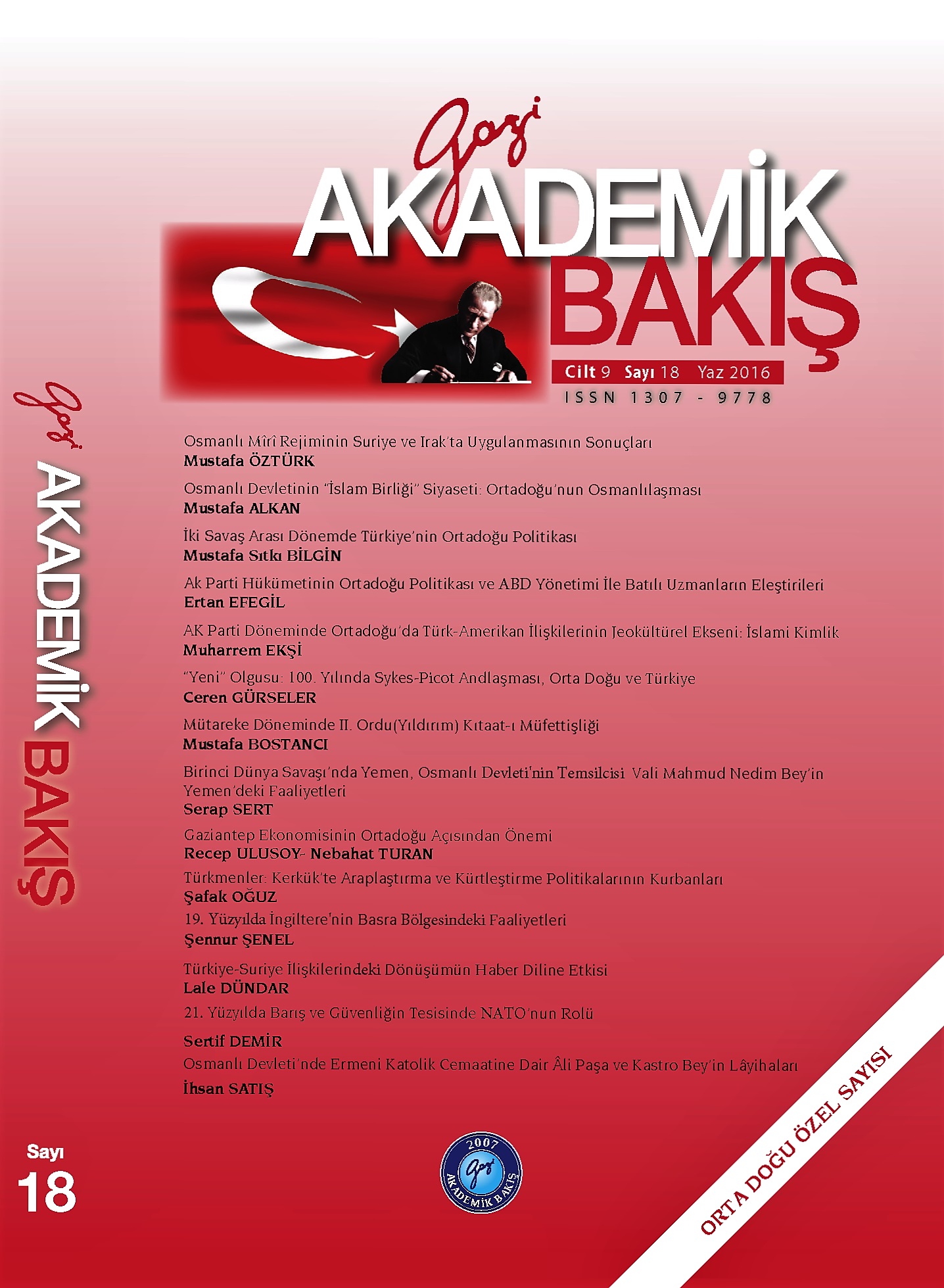Osmanlı Devletinin “İslam Birliği” Siyaseti: Ortadoğu’nun Osmanlılaşması
“Islamic Unity” Policy of The Ottoman Empire: Ottomanization Of The Middle East
Author(s): Mustafa Nail AlkanSubject(s): Geography, Regional studies, History of Law, Islam studies, The Ottoman Empire
Published by: Gazi Akademik Bakış
Keywords: Middle East; Yavuz Sultan Selim; Islamic Unity; Ottomanization; Pax Ottomana; Ottoman Millet System;
Summary/Abstract: Middle East, with its most widely used meaning, is the region that covers Egypt in the west, Turkey and Iran in the north, Arabian Sea in the east, and Gulf of Aden and Yemen in the south. This region is the one that is thought to have witnessed the dawn of human civilization, which spread from the “Fertile Crescent” via Tigris, Euphrates, and Nile to the shores of Persian Gulf, Arabian Sea, Red Sea, Mediterranean Sea, and beyond. It is the home of the ancient civilizations of Mesopotamia and Egypt. It’s the heart of Islamic Civilization, as well as the birthplace of the revealed religions, such as Judaism and Christianity. Islamic unity, which started with the leadership of Prophet Mohammad and established during the reign of Rashidun Caliphs and the reign of Umayyad and Abbasid Dynasties, disrupted by the Crusades and Mongol Invasions. Following a struggle of two and half centuries, it was established once again by the Ottoman Empire in 16th Century, after four major military campaigns. This was followed by a four centuries of peace(Pax Ottomana) in the Middle East. Ottoman Empire, paying attention to the local dynamics, established an administrative system. This administative system, united the locals under the “Ottoman Millet System”, thus Ottomanized them. Today, in order to achieve peace in the Middle East, it is essential to understand the four centuries of Ottoman experience.
Journal: Gazi Akademik Bakış
- Issue Year: 09/2016
- Issue No: 18
- Page Range: 17-32
- Page Count: 16
- Language: Turkish

